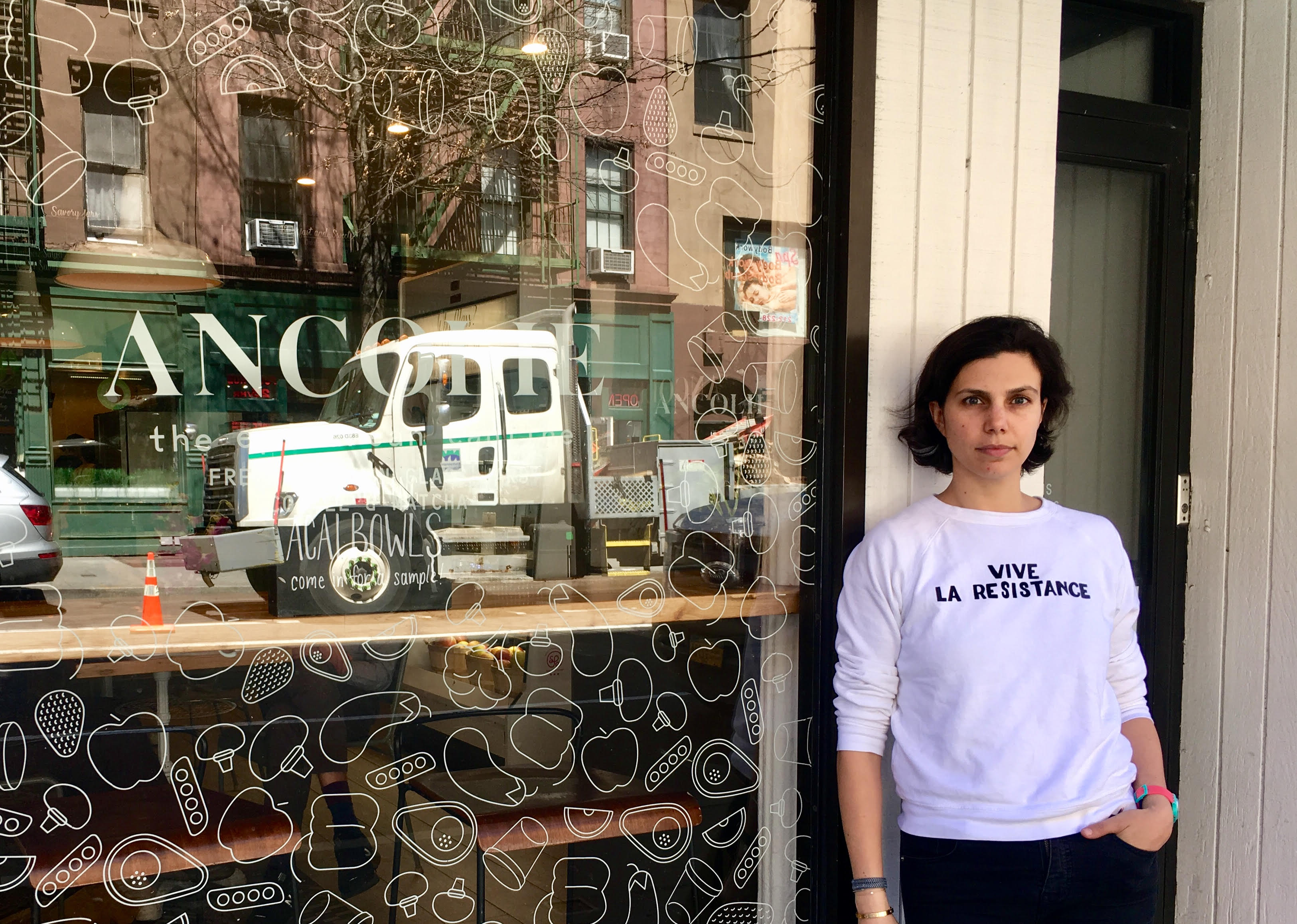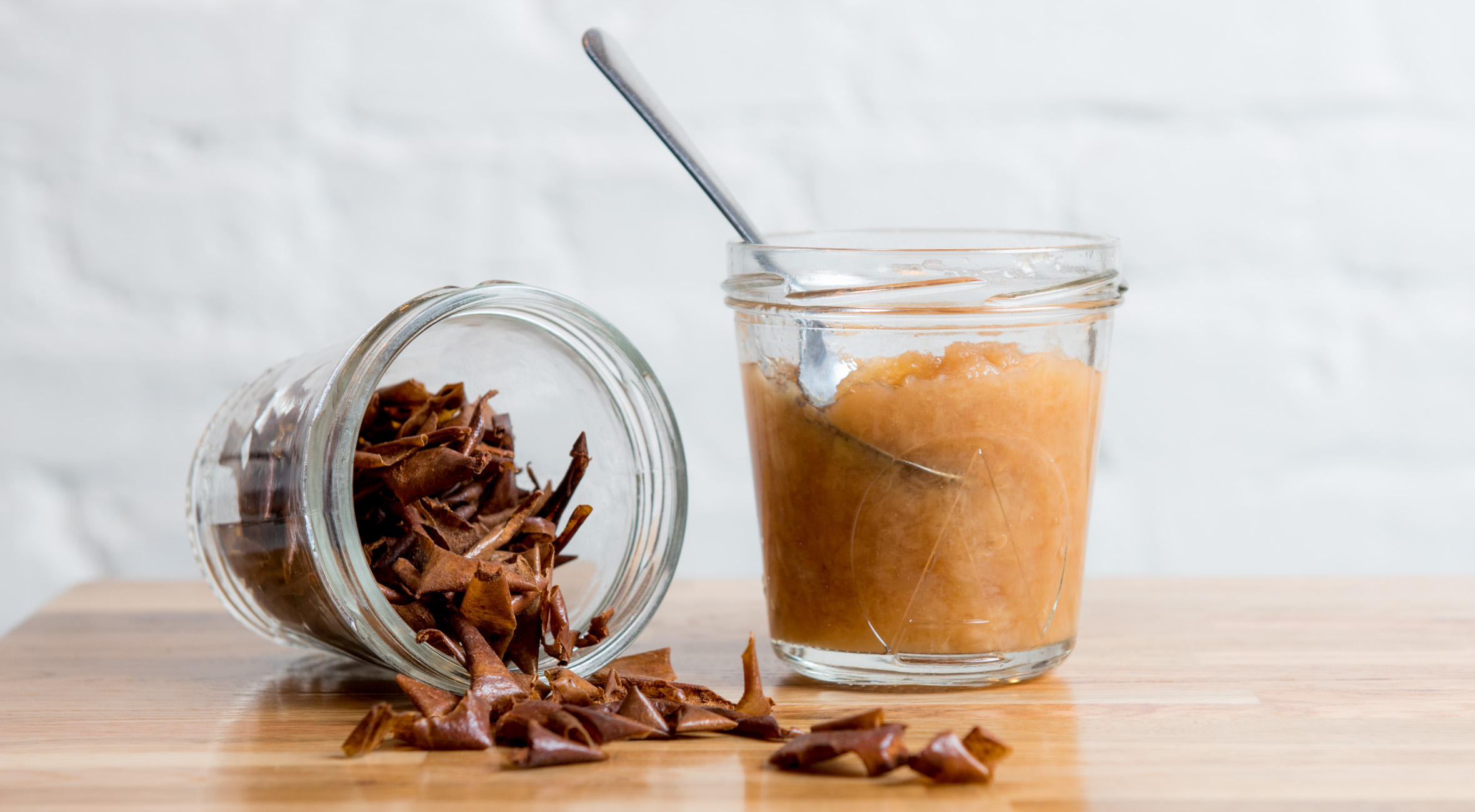Two-thirds of a cup of purple cabbage with a quarter cup of quinoa per serving calculated against the average daily customer count. Ancolie has every ingredient measurement and culinary decision down to a science before fresh vegetables, legumes or apple compote are layered and stuffed in a jar and handed off to the customer.
Directly next to immense homelessness and rising poverty numbers, food waste is still an underlying issue in the country. Portion control has become a factor for the lack of food conservation, and yet, not much is being done to fix the issue. To avoid, and somehow attempt to fix a handful of food waste issues, some restaurant owners have changed the average ways in which food businesses operate and are getting on board with different ways to combat food waste.
“I was obsessed by the amount of waste that comes with regular packaging and I didn’t know how to address it,” said Chloe Vichot, the French chef and founder of Ancolie, who thought of the idea of serving food in Mason-style jars after a trip to Europe. “I saw ‘food jars’ in different places, so I thought it would be a good way to tackle the food waste that we have in to-go lunches.”
Vichot, who was born in Paris, France and worked in corporate finance for 10 years, before leaving to become a chef striving to bring certain “traditional” European waste-prevention norms to the United States. A block away from Washington Square Park on West 8th street and 6th Ave, Ancolie competes against dozens of restaurants in the area, but stands alone in uniqueness for its recycling techniques, its food disposal choices and clean-eating menu. One technique is conserving food in any way possible.
For three years, Vichot unintentionally challenged New York’s eating habits in hope that every filled glass casing is a step closer to curbing the ways by which Americans prepare, eat and dispose of food.
“The whole concept had a very sustainable aspect,” she said. “Also, with glass, the food stays fresher longer.”

Instead of Mason jars, Ancolie’s jars are specially made for perishable food. Photo by Amanda Williams
Ancolie’s daily food handling process demonstrates the many issues that other restaurants come across due to food waste such as garbage. The restaurant keeps a trash bin in the kitchen, which is rarely used, but the dining room remains a waste-free area. Therefore, a disposal bin is not needed there.
The New York Department of Health’s food guidelines states that food establishments are required to donate it to local food charities after the business closes as long as it is edible and not contaminated. However, some restaurant workers feel that there are other alternatives such as giving it to employees who could use the much-needed meal.
The inner-workings of this organization can be misconstrued due to the Department of Health’s law.
The Food Bank for New York City is a nonprofit organization that assists food insecurities from many different angles, including working with the Supplemental Nutrition Assistance Program, to ensure the welfare of those in need of government-issued food stamps.
Out of only a few throughout the city, this local food bank does not accept donated pre-prepared food, which means that leftover restaurant food is unacceptable as well. Only money can be donated to the Food Bank. With that same money, non-perishable food is purchased for those needing assistance, leaving some restaurants with just one option: disposal.
While some restaurant managers ideally prefer to not give away the same food to employees that they have been handling all day, technically, there is no set-in-stone law or guideline which states that food workers are not allowed to take home leftover restaurant food. However, the department discloses a number of issues pertaining to food temperatures, most of which do not apply to Ancolie because of Vichot’s choice on what and how to chill or warm food.
“We have very little leftover because we prepare everything in very small batches,” she said. “We compost all of our food scraps [and] all of our recipes are made so that we can use as much as possible with every ingredient. We have very little to waste.”
Several attempts for comment from Barbara Turk at the Food Safety office at the New York Department of Health were unsuccessful.
Before closing, Vichot either gives leftovers to her employees or donates it to local artists in the neighborhood who may be hungry at the end of the day. In the case of fruit scraps, Ancolie uses them for desserts.
“[There are] apple skins that we get from ‘Food Rescue’ would normally be thrown away by other institutions,” said Vichot. “But we add honey and cinnamon and bake it as a crisp. We [exchange] our own food compost for those apple skins.”
By the end of the workday, shelves are cleared and the preparation cycle begins again the following day.
Larger food associations such as ‘Pret A Manger’ are starting to get on board with food composting and conservation. The company developed ‘The Pret Foundation,’ which packages food and donates unsold food to nearby soup kitchens, shelters and food banks who take in pre-made meals.
Unfortunately, the U.S. is still battling massive food waste. Even worse, in France, it is relatively becoming a new social norm. Up until recently, French food waste laws were strict and enforced nationwide – more so that it has been praised for being one of the most “sustainable” countries when it comes to food waste. However, recycling laws, including food packaging products, are strict, but not very clear. In the latest report by the French Economy Ministry’s ‘Consumer Watchdog’ in 2015, only 23 percent of French households contribute to recycling and food waste numbers have risen approximately 4 percent each year since 2009.
“Things are changing in France and in Europe right now,” said Vichot. “When I was living in Paris, you would never see people walking around with a to-go cup. People actually take the time to eat.”
For those who choose to leave with their meal, Vichot offers a one-dollar refund for every jar returned to the restaurant. She still has hope that other restaurant owners will follow her example in the future of food conservation.
Tags: Manhattan Food


Your Comments